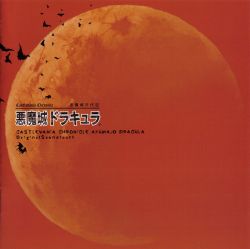I just discovered that in January Konamistyle is releasing the soundtrack to Harmony of Despair, the XBLA game that came out earlier this year which allowed you to play with up to three friends as one of Castlevania‘s heroes (and heroines!). What’s even cooler is there will be a bundle that includes this along with the Castlevania Tribute 1 and 2 albums (Tribute!? You steal men’s souls! And make them your slaves!). I’m hoping it won’t be a bunch of electronica… However, I’ve given the Harmony of Dissonance soundtrack a listen and was quite impressed. While it’s a selection from mostly newer games in the series (would have loved to hear some Castlevania IV and GameBoy arranges), Harmony of Dissonance has a truly rocking soundtrack with primarily new arranges. One of my favorites is “Ruined Castle Corridor”, the main castle theme from Aria of Sorrow.

Castlevania: Harmony of Dissonance – “Ruined Castle Corridor”
Konami’s heavy metal treatment of “Ruined Castle Corridor” is pretty intense, with live guitars and an excellent synth library. The track might be called Soma’s Theme, the young man who is cursed with becoming the next Dracula (though he must start out as a college kid with a penknife – how he learns to wield a 6-foot sword of demon slaying in six hours, don’t ask). Anyway, the piece has a slight tinge of sadness, of bearing the burden of fate. Ultimately, much better than the meatier metal of Rize’s “Soul of Axe Armor” (named after the blue Axe Knights who roam the castle).
Michiru Yamane composed the original version of this theme, but she also composed an arranged version for the Lament of Innocence soundtrack titled “Cross of Fate“. This fantastic piece has Mrs. Yamane’s trademark percussion line, mixing a standard drumbeat (well-defined here as usual) with weird synthetic whisperings (see also 2:40). The drums are particularly intense and mesh well with the string, piano, and trumpet-driven melody. The piece has some excellent organ work beginning 2:40, the type of intricate, virtuostic work Castlevania is known for. This ending section goes on for perhaps a little too long without variation though, but it is still a fantastic arrange and a far cry from the blurry audio of the Gameboy Advance.





